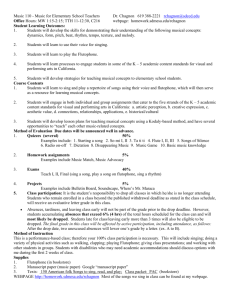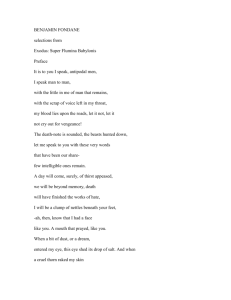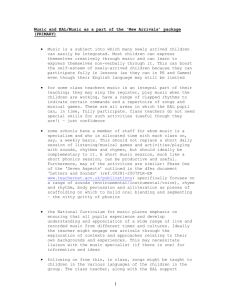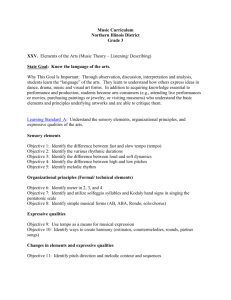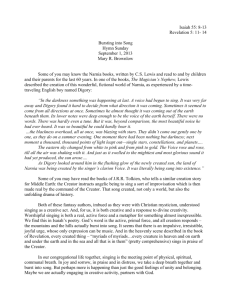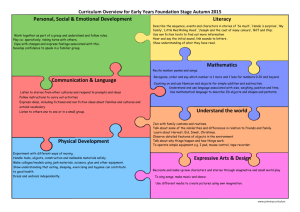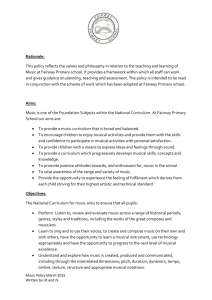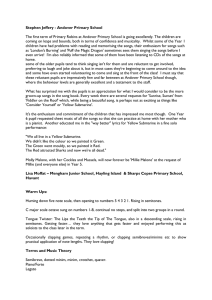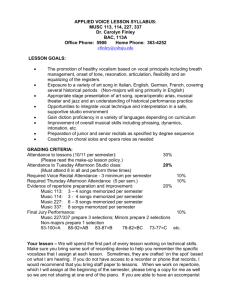Frequently Asked Questions
advertisement
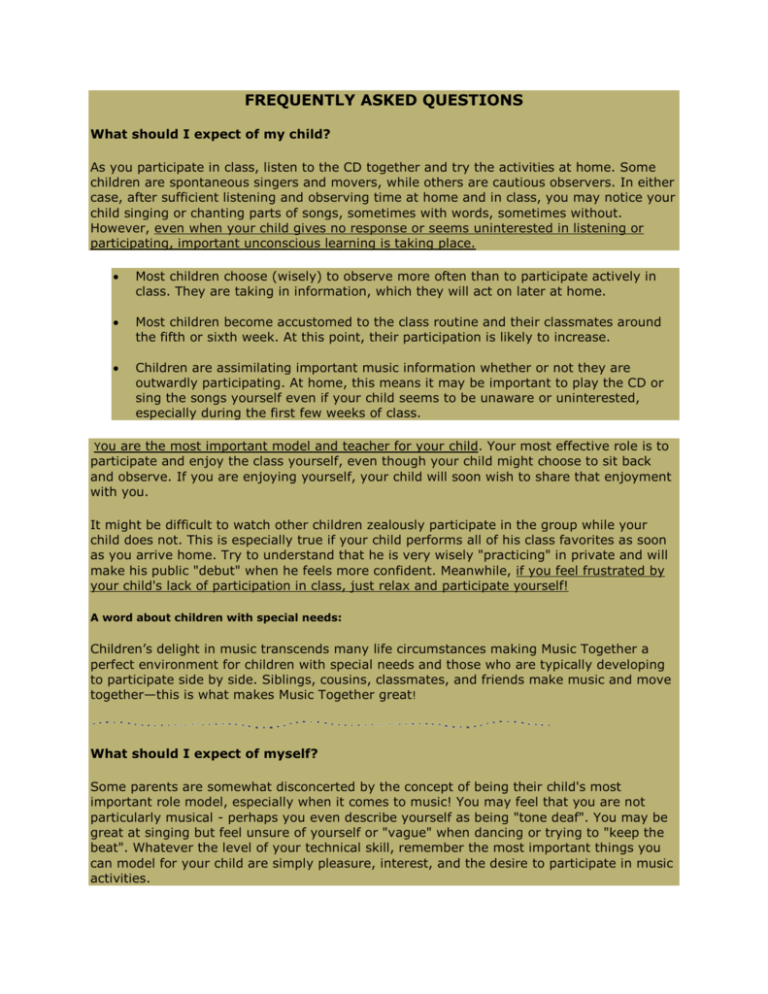
FREQUENTLY ASKED QUESTIONS What should I expect of my child? As you participate in class, listen to the CD together and try the activities at home. Some children are spontaneous singers and movers, while others are cautious observers. In either case, after sufficient listening and observing time at home and in class, you may notice your child singing or chanting parts of songs, sometimes with words, sometimes without. However, even when your child gives no response or seems uninterested in listening or participating, important unconscious learning is taking place. Most children choose (wisely) to observe more often than to participate actively in class. They are taking in information, which they will act on later at home. Most children become accustomed to the class routine and their classmates around the fifth or sixth week. At this point, their participation is likely to increase. Children are assimilating important music information whether or not they are outwardly participating. At home, this means it may be important to play the CD or sing the songs yourself even if your child seems to be unaware or uninterested, especially during the first few weeks of class. You are the most important model and teacher for your child. Your most effective role is to participate and enjoy the class yourself, even though your child might choose to sit back and observe. If you are enjoying yourself, your child will soon wish to share that enjoyment with you. It might be difficult to watch other children zealously participate in the group while your child does not. This is especially true if your child performs all of his class favorites as soon as you arrive home. Try to understand that he is very wisely "practicing" in private and will make his public "debut" when he feels more confident. Meanwhile, if you feel frustrated by your child's lack of participation in class, just relax and participate yourself! A word about children with special needs: Children’s delight in music transcends many life circumstances making Music Together a perfect environment for children with special needs and those who are typically developing to participate side by side. Siblings, cousins, classmates, and friends make music and move together—this is what makes Music Together great! What should I expect of myself? Some parents are somewhat disconcerted by the concept of being their child's most important role model, especially when it comes to music! You may feel that you are not particularly musical - perhaps you even describe yourself as being "tone deaf". You may be great at singing but feel unsure of yourself or "vague" when dancing or trying to "keep the beat". Whatever the level of your technical skill, remember the most important things you can model for your child are simply pleasure, interest, and the desire to participate in music activities. Many adults feel deprived, confused, or inadequate about their ability in music, as if they have been denied something that should be effortless and natural. In fact, this is often the case. As your understanding of your child's music development grows in the coming weeks, you may also come to understand that unfortunate circumstances in your own childhood music experience may be at the root of some of these feelings. More important, by participating with your child, you can begin to rediscover within yourself the natural human musicality that is everyone's birthright. What can I expect from class? Music Together is designed for children ages birth through age 7. At Music Together we believe that music ability is as much a basic life skill as walking and talking, and that all children can learn to sing in tune, keep a beat, and participate with pleasure and confidence in the music of their culture. Music Together classes nurture the child’s natural enthusiasm for music and movement as we sing, dance, chant, and play instruments in an informal setting that will enrich her musical environment and guide her towards a lifetime of musicmaking enjoyment. Are these classes appropriate for my child with special needs? Music Together classes are accessible for children with special needs through Music Together’s focus on accepting and including each child (and their adult!) every step of our musical journey. Contact your local licensed center director to inquire about your family’s options. Why aren’t there separate classes for different age groups? In the 1980s Music Together pioneered the development of the mixed-age approach in early childhood music. In each class we strive to create a musically rich, developmentally appropriate environment where the whole family can enjoy music and nurture skills at the level right for each child. Mixed-age classes also provide a rich learning environment because children of different ages thrive when they interact with each other: the babies are often fascinated by the older child, and the "big" children (3- and 4-year-olds) enjoy helping and sharing with the "little" ones. This approach is based on research from music education, early childhood development, and family relationships, as well as our 20 years experience in the field. Because children aged 5, 6, and 7 are developmentally so different from the children birth through 4, Music Together does offer a class beyond the mixed-age class created specifically for this older age group. Children 5 through 7 are ready for more independence and new challenges and are both more social and more comfortable with a structured classroom setting. Music Together Big Kids® classes are designed to meet the needs of 5- through 7-year-olds, whether or not they have participated in Music Together mixed-age classes before. What about practicing at home? Play your Music Together CD at home. If there is a CD player in the car, it's also great to play the CD while driving. Do not limit its use to the car, though - children are less able to move to the music while strapped into a car seat! Many children will want specific songs repeated again and again. Try to accommodate them by replaying their favorite track. They crave the repetition because it is necessary for their development. Repetition is one way they "practice". Another way they "practice" is through spontaneous, playful imitation of the songs and activities they experience in class. These imitations will, of course, probably not be "correct" but they will certainly be fun! Some children may not demonstrate interest in the recording. Right now, they may have different developmental needs and interests or simply have other current favorites. Perhaps they haven't adjusted to the class experience yet and are holding some enthusiasm in reverse! Just play the CD in the background, perhaps as they play or take a bath. Their interest in both the class and the CD will grow with familiarity. The CD provides a way of reinforcing and following up on the class experience of live adults participating in live musical activities. The more you can continue this kind of participation at home by singing the songs or doing the chants and fingerplays yourself, the better it is, as long as you do it in the spirit of fun and enjoyment. Nothing sets a better model for your child than doing an activity you enjoy yourself. Remember to use the songbook, even if you don't read music! Use it like a story book and "read" the songs to your child, especially the ones with pictures. In time, you might suggest that your child draw his or her own pictures for the songs, especially for those that don't have one! Notice the effects of your child's experience in class and note his listening habits with the CD at home during the week. Write down or remember any questions you might have about your child's responses and then ask your teacher and discuss with other parents in class.

